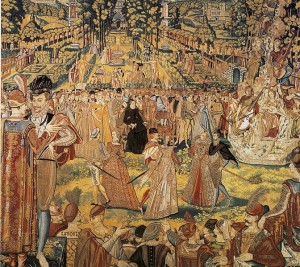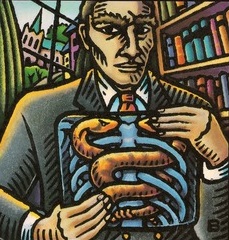I’ve always loved the name White Wolf gave to their role-playing system: the Storytelling System. The manuals remind both game-masters and players that the goal of the game is not to defeat a monster or accumulate treasure, but rather, to tell a great story.
I began roleplaying when I was in university. One of my biggest frustrations in growing up was the increasing difficulty in finding someone to play with. As I got older, the games I played with my toys became increasingly more complex. Unfortunately, my playmates kept getting younger, as kids my age gave up play entirely and I had to turn to my younger neighbours, who complained when the stories I came up with were too complicated for them to understand.
Then I went away to university, in the dawning age of the internet.
I wasn’t fortunate enough to find a role-playing group at my university, but I did find a number of online, text-based roleplaying games. These are not the “RPGs” of Nintendo or Playstation fame; these are groups of fans who used words alone to describe environments, objects, and characters. Fans from all over the world met up online, took on personas, and acted out events. Simple code introduced elements of random chance into the game, and described the level of damage if two characters got into a fight.
Some players occasionally acted as game masters to lead characters through organized events: an alien visitor, the investigation of a mysterious disappearance, a quest for a treasure, a battle between two factions. Other times, players just got together on their own and explored the relationships between their characters, talking about the characters’ histories or dreams.
I didn’t find a My Little Pony roleplaying game, but I did find a few based on everyone’s favourite Robots in Disguise: the Transformers.
Excited by the logs I read-the interesting, well-developed characters and complex plots-I created a character and signed up. Finally, at long last, I was able to play Transformers with people who could keep up with me, who could challenge me and surprise me, and together, we acted out our own epics. I had daily practice writing my character’s dialogue, describing her surroundings and tools, and scripting action in a manner that was clear, detailed, and fast-moving. Soon, I began writing some fan fiction stories about my character, providing glimpses into her past and possible future.
I’d written stories before, mostly for school projects, a few simply to entertain myself. These stories, though, were intended to be shared. I posted them on the internet and published a few in a paper fan-zine.
Looking back, I’m surprised how long it took for me to realize that this was something I wanted to do: not only create worlds, but share those worlds with others. I did undergo a learning period, a time when my writing was focused on fandom (roleplaying, fan fiction, etc.) and I also underwent a growth period when I struggled to balance the time I spent on fan activities with the time I needed to create my own original, marketable fiction. I eventually left my Transformers role-plays, though I do still role-play occasionally.
Roleplaying gave me a chance to share my stories with others, to use words alone to describe settings and action, to refine my skills at dialogue with the help of my fellow players, and most of all, to keep me inspired and writing during the long years of learning my craft.



